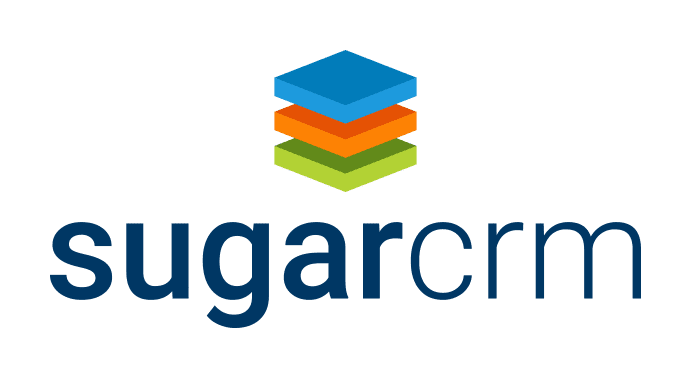No accounting or ERP system will do everything you need it to do out of the box. At best, most systems will provide between 80% to 90% of the overall functionality you need to manage your business. So, don’t worry that you have some functional gaps. The fact is that you may be using a great application for your business and you simply need to round out the edges with some small customizations or integration to third party applications. Here are a few tips to identify functional gaps.
Take inventory of all software applications in use in your business and document whether they are integrated with your core business accounting system. Every company uses a variety of business applications which vary widely from industry to industry. A medical business will likely have separate systems for staffing while a distributor may have a separate system for managing their routes and truck maintenance, and manufacturers may have separate systems for production scheduling. The more applications you use – the more likely that you are simply filling gaps that your accounting system doesn’t support.
It’s vital that you understand if the applications are integrated or should be integrated to get a real perspective on the inefficiencies they’re causing in your business. For example, you may be just fine using a stand-alone application for things like preventative maintenance if there is no impact on schedules for machines or trucks or employees which are maintained in other systems.
It’s also important to understand the level of integration that each application provides with your accounting or ERP system. For example, some systems are very tightly integrated with a bidirectional flow of data from one system to another and behave more like an integrated module than a third-party application. Other applications may have very limited integration and none will be completely integrated. Consider that almost every business application you use has an employee or user master file. It may integrate to data in other systems but you almost always have to setup users and employees in multiple systems.
Even products from the same vendor may not be entirely integrated. Take for example many of the human resources applications available from accounting and ERP vendors. They probably integrate to the general ledger for accounting-based transactions but do they also integrate to the operational modules such as shipping, inventory and warehouse management, or production where the skillsets and required training to operate forklifts and machines or the required OSHA training is integrated to prevent unauthorized and untrained employees from being scheduled on jobs or tasks that require the use of these types of equipment? Probably not.
Once you document the various business applications in use at your company you should then ask each department to document the name and purpose of each spreadsheet that they use to manage their daily, weekly, and monthly tasks. Don’t worry about spreadsheets used for data analysis. Rather, you’re looking to identify spreadsheets that are used to manage critical business functions that your accounting or ERP software doesn’t support. For example, many companies use spreadsheets for customer quotes and estimates since the native features of their software can’t handle the complexity of their pricing models. Other common examples of spreadsheet use for critical business functions include budgeting, sales analysis, inventory management, material planning, purchase order requisitions, time sheets, expense management, demand forecasting, scheduling, project or job management, invoicing and billing, quality control, contracts, organizational charts and human resource records, and similar functions.
Most people will be surprised to find that they have so many spreadsheets in use in their company and almost every business is using at least one spreadsheet that overlaps with features that already exist in their core business software that could (should) be used if they only knew that the features existed or understood how to use it properly. The key is to document what’s going on outside your core system and then find out what modules and features are available through your accounting or ERP vendor (or through third parties) to fill those gaps to replace disparate spreadsheets which rely on manual data entry and are almost always out of date.
One other way to identify functional gaps is to talk to your employees. Ask them what your current business software does well and what features they’d like to have in the software. You’ll often find that employees have found creative work-arounds to fill functional gaps that you weren’t aware of. You may discover that your accounts receivable department is exporting data to a spreadsheet to manage collection calls where they would be better served with a commercially available accounts receivable collections module. You may find out that customer service is manually importing orders received via EDI or an ecommerce website where integration could automate this daily or weekly task saving hundreds of hours annually.
Functional gaps happen every day but they can be magnified if you picked the wrong accounting or ERP system to begin with. Functional gaps will also be magnified as your business grows and changes. For example, you should conduct an audit of your business software annually to understand if you’re outgrowing its capabilities. If you’re experiencing rapid growth, you’ve expanded internationally, added additional sites, changed your business model such as adding services or manufacturing, added new product lines, or if you’ve recently acquired or divested of a business. All of these things will bring functional gaps to the forefront and will create the need for more and more stand-alone systems and spreadsheets.
In some cases you may be able to fill these gaps by purchasing additional modules, changing the setup in a module you already use, or by purchasing and implementing an integrated third party application. Or you may be able to spend a little bit on custom programming to tweak your system or to integrate other systems to fill the gap. But in the end, every business changes and your business software is unlikely to meet your needs over time.
Try to identify and quantify the cost functional gaps have on your business. This will include the cost of purchasing, maintaining, and customizing all of the applications that are outside of your core accounting or ERP system. The cost will also include the time spent by employees working outside the system in spreadsheets or on manual processes. It will take some time and attention to truly understand these costs. Some accounting and ERP software consultants can assist you with a detailed business process review. This typically takes a couple of days to a week to complete and will cost you somewhere in the neighborhood of $2,000 to $4,000 for a high-level review but it can save you a lot more than that in the long-run if you can identify inefficiencies and fill those gaps or understand the need to move to a better system.
The time has come to move to a new system if you’re spending too much on ancillary applications and you are too reliant on spreadsheets. Often, the functional gaps may be enough to cost-justify moving to a more robust system or a system that is a better functional fit for your industry. In other cases, functional limitations will be one of many factors that lead you to the decision to replace your business software. Either way, you must understand these costs to develop a business case to justify the move.Click here to learn how ERP can benefit an organization across each major department.

